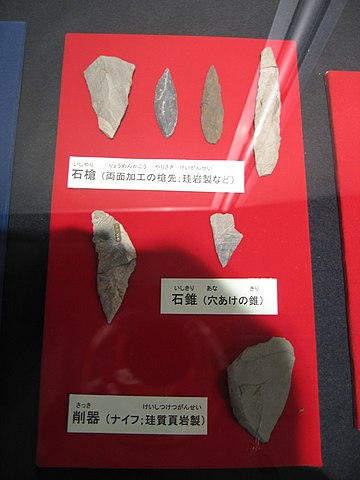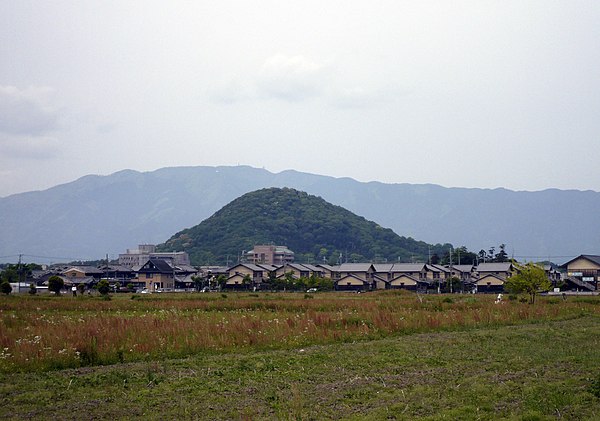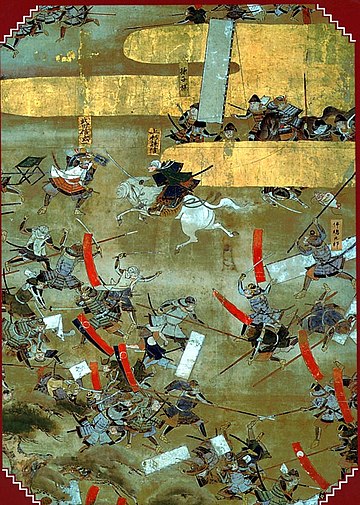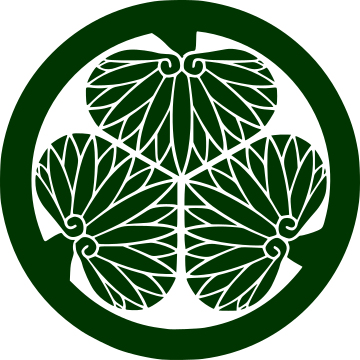
Prehistoric Period

Antiquity

The Middle Ages

Early Modern Period

Modern Times
History
Prehistoric Period
In this prefecture, sites where people were active in the Late Paleolithic period, which began about 30,000 years ago, have been identified on terraces and plateaus in the northern part of the Nobi Plain (the Hino, Terada, and Tsubakidoro sites). Other sites have been identified on narrow ridges in the mountains (the Tokuyama Terayashiki site in Fujihashi Village, Ibigawa Town) and in low marshy areas (the Miyanomae site in Miyagawa Village, Hida City).
From these sites, stone tools made from flakes of broken stone, such as knife-shaped stone tools, sharpeners, fine stone blades, and lancets, as well as gravels thought to have been used for cooking, wood chips with processing marks, and other daily utensils have been confirmed.
Antiquity
In the early 4th century, the western part of Mino came under the power of the Yamato regime, and in the late 4th century, their rule extended to the Hida region. In the Kaika dynasty, the San-no-Mae Kokuzo was established in Fuwa County, followed by the San-no-Go Kokuzo in Kakamu County, the Nukata Kokuzo in Ono County, the Mugito Kokuzo in Mugi County, and the Hida Kokuzo in Ono County in the Narimu dynasty. In addition, the Honzu-no-kunizo are also mentioned (Shodai-jiki-honki, Kojiki).
After the Ritsuryo period, the above-mentioned kokuzo provinces were merged to form two new provinces: Mino (18 counties, 131 villages) and Hida (3 counties, 13 villages) (Wana-ryuju-sho). Mino was written as "Ono" (Shosoin document from the 2nd year of the Taiho era (702)), and Hida was written as "Hida" (Yoroi decree). It was in the first half of the 8th century that the notation of the country name Hida was established as "Hida. Mino and Hida provinces belonged to the Higashiyama Province, and the main line from the Kinai region passed through Omi and Mino and went to Shinano Ueno, so Mino to Hida was a branch line of the Higashiyama Province. This Higashiyama Road has been used since ancient times. It also appears in the legend of Yamato Takeru's conquest (Kojiki).
As almost the center of Japan, Mino Province was an important military base connecting the eastern part of the country with the Kinai region, and thus is a region where many important battles in Japanese history have occurred [5]. In ancient times, there was the Jinshin Rebellion (672), in which Emperor Omijin raised an army from this country, and a fierce battle took place near the Fujikogawa River in Sekigahara Town. In the 8th century, the kokubu was located in Fuchu, Tarui Town. Kokubunji Temple was built in Aono-cho, Ogaki City, and Kokubunnji Temple in Hirao, Tarui Town. Ichinomiya Shrine became Nangu Taisha (now Miyashiro, Tarui Town).
The Middle Ages
In the Middle Ages, the Toki clan governed Mino Province, and the Kyogoku clan governed Hida Province. In the Warring States Period, Mino Province became the stage for the activities of Dosan Saito and Nobunaga Oda. Hida Province was ruled by the Anekoji clan and later by the Kanamori clan, which followed Hideyoshi Hashiba. The Battle of Sekigahara (1600) between Tokugawa Ieyasu and Ishida Mitsunari was fought between Sekigahara town, Tarui town, and Ogaki city in the Saino region.
Early Modern Period
In the Edo period (1603-1867), the Mino Province was divided into several small fiefdoms by the shogunate because it remained strategically important and had a large amount of stones, although the fiefdoms were reexamined and transferred to other areas as a result of the Battle of Sekigahara and other factors. As a shogunate fief, it was ruled by the Mino county governor of Kasamatsu Jinya. The largest clan in Mino was the Ogaki clan with 100,000 koku, followed by the Naegi, Iwamura, Gujo, Takatomi, Kano, and Ogaki Shinden clans, the Imao clan of the Takekoshi clan, an attached retainer of the Owari clan, and the Takasu clan, a branch of the Owari clan. The Owari clan's domain outside Mino was 120,000 koku, and the Iwakihira and Bicchu Okada clans also had fiefdoms.
There were also several Hatamoto governorates, such as the Myochi Toyama clan and the Takenaka clan's camp, which was a shift yosei (a group of shogunate retainers). Hida Province was originally under the Hida Takayama Domain, but during the Genroku period (1688-1704), the shogunate transferred the Kanamori clan to the Kaminoyama Domain, which was then under the control of the Hida county governor of Takayama Jinba.In addition, the Nakayama Road was developed by connecting the Higashiyama Road, which had been developed since the Ritsuryo Period, with the roads developed by the warring feudal lords in various regions during the Warring States Period.
Modern Times
On January 2, 1872 (November 22, 1871), Kasamatsu Prefecture (established in 1868) was merged with Imao, Iwamura, Ogaki, Kano, Gujo, Takatomi, Naegi, and Nomura Prefectures created by the abolition of the han system (July of 1871) to form Gifu Prefecture. The original prefectural office was located in Kasamatsu Jinya. (The prefectural governor was Hasebe Yoshinoren (formerly of the Fukui Domain), and the chief councilor was Ozaki Toshinori (formerly of the Kameyama Domain). The prefectural government building became too small and a new building was constructed in Hachidera, Imaizumi-mura (Gifu City), and moved on June 21, 1874 (Meiji 7). On August 21, 1876 (9th year of Meiji), three counties of Chikuma Prefecture (Yoshiki, Ono, and Masuda) were merged to form Hida Province. The new government made adjustments to the consolidation of the prefectures so that they would have more than 600,000 koku in the old stone value, so the merger of Mino and Hida was realized. On November 1, 1883, Shimo-Ishizu-gun incorporated Kaname, Aburashima-shinden, and Enai villages in Kuwana-gun, Mie Prefecture. On July 12, 1887, Kaisei County incorporated Matsuyama Nakajima Village, Kaisei County, Aichi Prefecture. On July 1, 1889, the municipal system of towns and villages was enacted.
On October 28, 1891, the M8.0 Nobi Earthquake hit Neo Village (now Motosu City), Motosu County, causing severe damage. On September 22, 1912, a storm caused 114 deaths, 6,122 houses completely destroyed, and 3,197 houses partially destroyed in the prefecture [6]. January 1918: Heavy snowfall in the Hida region. Approximately 300 people died of starvation in the village of Mannami in Sakashita Village [7]. April 1, 1955: "Gifu Prefecture People's Song" was established.
April 1, 1955A large part of Sanno Village, Ena County was incorporated into Asahi Village, Higashikamo County, Aichi Prefecture. On October 15, 1958, Shirotori-cho, Gujo County incorporated most of Ishitoshira Village, Ono-gun, Fukui Prefecture. October 15, 1958Nakatsugawa City incorporated a part of Kamisaka Village, Nishi-Chikuma County, Nagano Prefecture. On September 26, 1959, Ise Bay Typhoon hit Japan. The Mino area was mainly damaged.
September - October 1965: The Summer and Autumn National Athletic Meet (Gifu National Athletic Meet) was held in Gifu Prefecture. The 1st National Sports Festival for the Physically Disabled was held in Gifu Prefecture in October 1965. February 11, 1966The prefectural government building was completed in Yabuta-Minami, Gifu City. It was relocated from Tsukasa-machi, Gifu City. On September 19, 1969, the M6.6 Gifu Prefecture Chubu Earthquake hit Oku-Akugata Village (present Gujo City), Gujo County, and caused damage. On July 27, 1971, Gifu Prefecture became a sister prefecture with Kagoshima Prefecture.
On September 12, 1976, the Nagara River burst its banks in Anpachi-cho, Anpachi-gun, due to heavy rains caused by a typhoon, resulting in the 9.12 flood disaster, causing extensive damage. June 21, 1988Friendship agreement was concluded with Jiangxi Province of the People's Republic of China. July 8, 1988 - September 18, 1988: The Gifu Chubu Future Exposition was held in Gifu City.
April 26 - June 4, 1995: Flower Festa '95 Gifu was held in Kani City.
April 1, 1996 Gifu City, the prefectural capital, was designated as a core city.
September 11-12, 2000: Heavy rains caused by an active typhoon front caused flooding and damage mainly in the Enan area in the Yahagigawa River basin (Enan torrential rain). October 21 - 22, 2000: The 9th National Sports Festival for the Mentally Handicapped (Yuaipikku Gifu) was held in Gifu Prefecture. February 13, 2005 Nakatsugawa City incorporated Yamaguchi Village, Kiso-gun, Nagano Prefecture.
March 1, 2005 - June 12, 2005: Flower Festa 2005 Gifu was held in Kani City.
January-February and September-October 2012, Gifu Prefecture hosted the Winter and Autumn National Athletic Meet (the 67th National Athletic Meet in support of reconstruction from the Great East Japan Earthquake, nicknamed "Gifu Seiryu National Athletic Meet"). 2012 Gifu National Sports Festival for Persons with Disabilities (The 12th National Sports Festival for Persons with Disabilities in Support of Reconstruction from the Great East Japan Earthquake, nicknamed "2012 Gifu Seiryu Games") will be held in Gifu Prefecture in October 2012. On September 27, 2014 (Heisei 26), Mt. Ontake erupted (see Mt. Ontake Eruption in 2014).
2015 (Heisei 27) October 10 - October 12, 2015 Crown Prince Tokuhito's (Tokuhito) visit to Japan.
January 1, 2017 (Heisei 29) - December 31, 2017 - Gifu City Nobunaga Lord 450 Project (commemorating the 450th anniversary of Oda Nobunaga's entry into Gifu and naming of Gifu) was held in Gifu City.